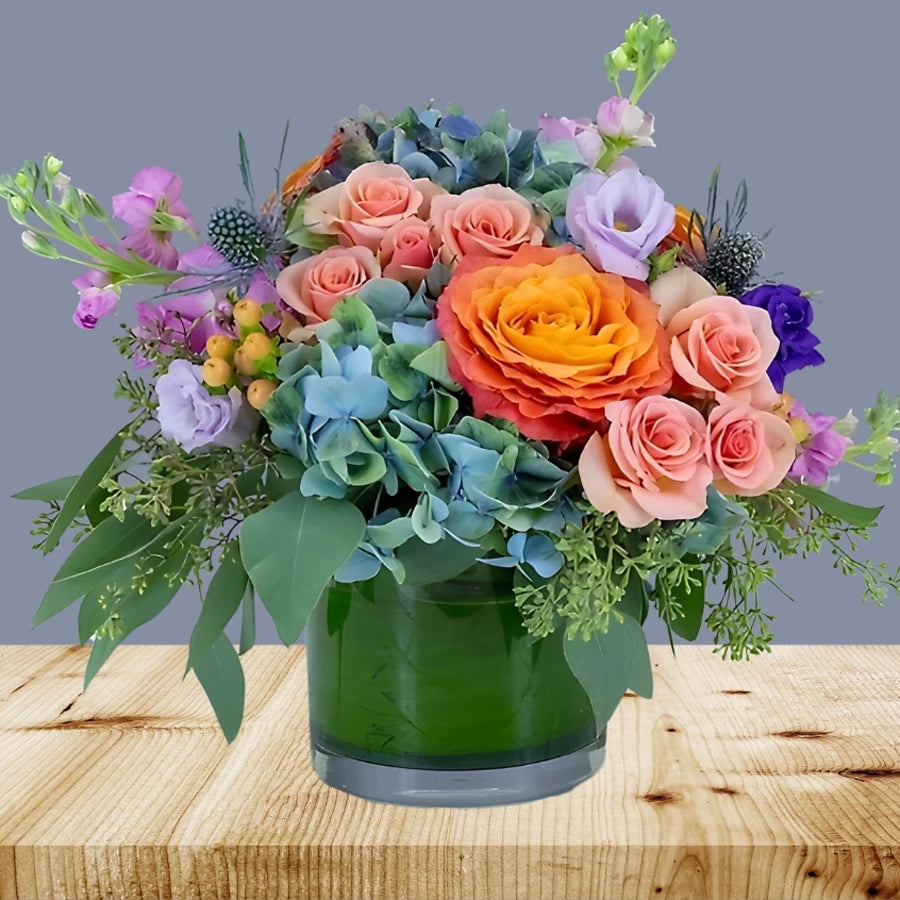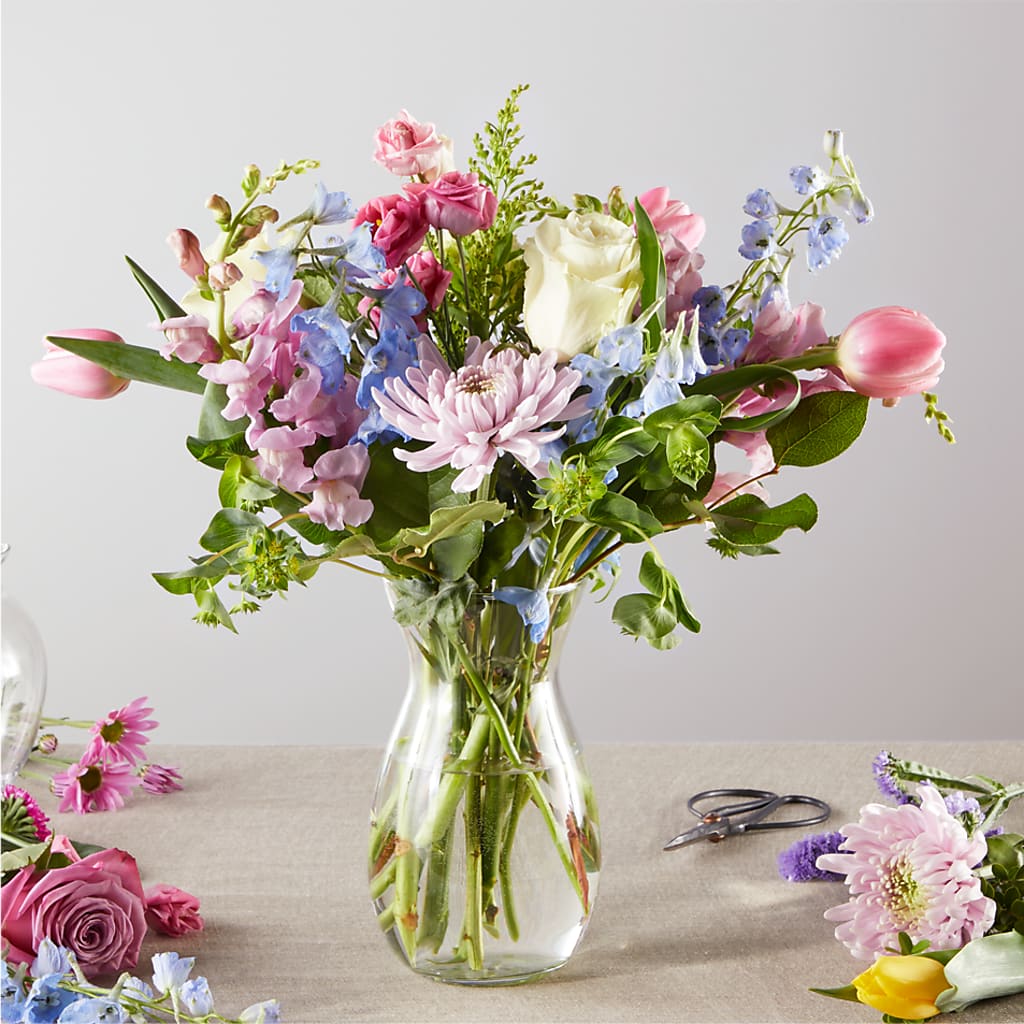Discover the Art of Floral Layout: Tips From Specialist Florists
Floral style is not simply a visual endeavor; it is a nuanced art type grounded in concepts such as balance, proportion, and contrast. Professional floral designers supply important insights right into picking the suitable flowers tailored to specific celebrations, guaranteeing that each plan resonates with its desired message. Techniques like the triangular approach and elevation variant improve visual allure, while proper care prolongs the beauty of the composition. Recognizing these foundational elements can transform your flower productions, but the trip doesn't finish there-- checking out seasonal motivations and practical tips can elevate your skills even more.
Recognizing Floral Design Principles
Commonly overlooked by novice flower designers, comprehending the basic principles of flower style is vital for producing visually appealing plans (florist lockhart). These concepts work as the foundation whereupon successful floral compositions are constructed, ensuring consistency and equilibrium in each development
The secret principles include equilibrium, percentage, contrast, rhythm, and unity. Equilibrium describes the circulation of visual weight within an arrangement, which can be in proportion or unbalanced. Percentage includes the partnership between the size of blossoms and the container, ensuring that each aspect matches the others. Contrast, accomplished through varying shades, shapes, and structures, adds interest and depth to the layout.

Rhythm overviews the audience's eye via the plan, often completed by duplicating forms or colors. Finally, unity guarantees that all components of the design job together cohesively, creating a sense of completeness. By mastering these concepts, flower designers can elevate their work, changing simple arrangements right into spectacular visual statements.
Ultimately, a solid grasp of these floral layout concepts not just improves creativity but also fosters a deeper admiration for the artistry associated with flower plans (florist lockhart). With practice and application, novice florists can develop their abilities and produce unforgettable styles
Selecting the Right Flowers
Picking the ideal blossoms is a vital action in the floral style procedure, straight influencing the general visual and efficiency of the arrangement. To begin, take into consideration the occasion; different events call for unique blossom types. Enchanting settings may profit from roses, while happy celebrations might match sunflowers or gerbera daisies.
Following, examine the shade combination. Harmonious shades can evoke certain emotions and boost the aesthetic allure. Use a shade wheel to identify complementary or similar color design that can produce a cohesive look. Additionally, think about the period; seasonal flowers not just guarantee freshness but additionally typically come with a reduced cost, making them a useful choice.
Another important variable is the intended longevity of the setup. Some flowers, such as chrysanthemums and carnations, have longer vase lives, while others, like peonies, may wilt faster. Last but not least, assess the shapes and size of the blossoms in regard to your layout goals. Bigger blooms can function as focal factors, while smaller sized flowers can fill out gaps and add structure. By thoughtfully selecting flowers, you can create arrangements that reverberate with their desired objective and target market.
Strategies for Plan

Another reliable technique is the "line style," which highlights the all-natural lines and shapes of the blossoms. By utilizing long-stemmed flowers, developers can produce a feeling of movement and flow in the setup, attracting the eye along the lines developed by the stems. Furthermore, including varying heights in the arrangement adds deepness and rate of interest, allowing the customer to check out the item from different angles.
This approach can evoke details emotions and established the state of mind of the plan. Don't fail to remember the value of unfavorable room; leaving spaces within the arrangement enables for taking a breath area, enhancing the total visual and preventing congestion.

Seasonal Floral Inspirations
Including seasonal components right into flower layouts can exceptionally improve their charm and importance. By straightening floral setups with the transforming periods, florists can stimulate specific moods, themes, and shades that resonate with clients and the environment. Each period uses an unique scheme of blossoms and foliage that allows for creativity and motivation.
In springtime, take into consideration the delicate charm of tulips, daffodils, and cherry blooms, which symbolize revival and vibrancy. Summer provides itself to bold colors and lavish structures with sunflowers, peonies, and read the article zinnias, commemorating wealth. Autumn's rich tones can be captured with dahlias, chrysanthemums, and decorative lawns, producing warm, welcoming arrangements that mirror the harvest. Winter provides a tranquil aesthetic with evergreens, amaryllis, and seasonal berries, best for evoking a feeling of peace and festivity.
Taking Care Of Your Setups
Taking care of floral arrangements is important to maintain their charm and durability. Appropriate care ensures that your blossoms remain vivid and fresh, boosting the aesthetic appeal of your area. Begin by placing your arrangement in a cool place, far from straight sunshine and drafts, as extreme temperature levels can create wilting and discoloration.
Consistently inspect the water degree in the vase, guaranteeing it suffices to cover the stems properly. Change the water every couple of days to avoid microbial development, which can reduce the lifespan of your arrangement. When transforming the water, trim the stems at an angle to help with much better water absorption. Eliminate any type of bent or browning fallen leaves and flowers promptly to protect against degeneration from dispersing.
Additionally, consider the sort of flowers in your arrangement; some might need details care. As an example, roses love a little bit of sugar in their water, while lilies gain from a cooler atmosphere. Lastly, prevent placing your plans near ripening fruit, as ethylene gas can accelerate wilting. By complying with these easy yet efficient care tips, you can appreciate your flower productions for a prolonged duration.

Conclusion
In verdict, mastering the art of flower style entails a thorough understanding of foundational concepts, mindful explanation selection of blossoms, and the application of effective arrangement strategies. Seasonal motivations further improve creative thinking, while proper treatment ensures that floral displays keep their appeal and long life. By incorporating these components, individuals can create impactful plans that convey emotion and serve their desired function, ultimately improving the experience of both the creator and the recipient.